Abstract
The resolution and sensitivity of electron paramagnetic resonance (EPR) and saturation transfer EPR (ST-EPR) for biological applications are greatly improved by deuteration and substitution of 15N for 14N in the spin-labeled probe N-(1-oxyl-2,2,6,6-tetramethyl-4-piperidinyl)maleimide (MSL). The EPR and ST-EPR spectra of the deuterated analogue [2H]MSL and the 15N-substituted and deuterated derivative [15N, 2H]MSL were compared with those of the parent MSL. The [15N, 2H]MSL showed the greatest gain in sensitivity and the most marked sharpening of spectral features. These improvements were due to (i) a reduction in the spectral linewidths resulting from the relatively weak hyperfine interactions of the unpaired electron with deuterium and (ii) spectral simplification due to a reduction in the number of nuclear manifolds from three to two in replacing 14N with 15N. In the freely tumbling state, the spectra of [15N, 2H]MSL and [2H]MSL showed 10-fold and 5-fold increases, respectively, in signal heights compared to MSL. To study the slow tumbling frequencies characteristic of biological molecules, the MSL and its derivatives were covalently bound to the enzyme glyceraldehyde-3-phosphate dehydrogenase [GAPDHaase; D-glyceraldehyde-3-phosphate:NAD+ oxidoreductase (phosphorylating), EC 1.2.1.12] on cysteine-149 of the catalytic site. The EPR and ST-EPR spectra of [15N, 2H]MSL and [2H]MSL adducts showed 3- and 1.5-fold gains in sensitivity, respectively. More important, there were striking increases in resolution, particularly for [15N, 2H]MSL over MSL. These improvements were observed throughout the correlation time range from 0.1 μsec to 1 msec. The EPR spectrum of [15N, 2H]MSL-GAPDHase at X-band showed no overlap of the two nuclear manifolds; therefore, all the elements of the A and g tensors could be measured directly from the spectrum. The increase in sensitivity and resolution of the 15N- and deuterium-substituted spin labels permitted quantitative simulation of the EPR and ST-EPR spectra of a labeled protein. Computation time was reduced 90% by 15N substitution. Use of 15N-substituted and deuterated spin probes substantially improved characterization of the motional properties of a protein.
Keywords: glyceraldehyde-3-phosphate dehydrogenase, spin label synthesis, saturation transfer electron paramagnetic resonance, spectral simulation
Full text
PDF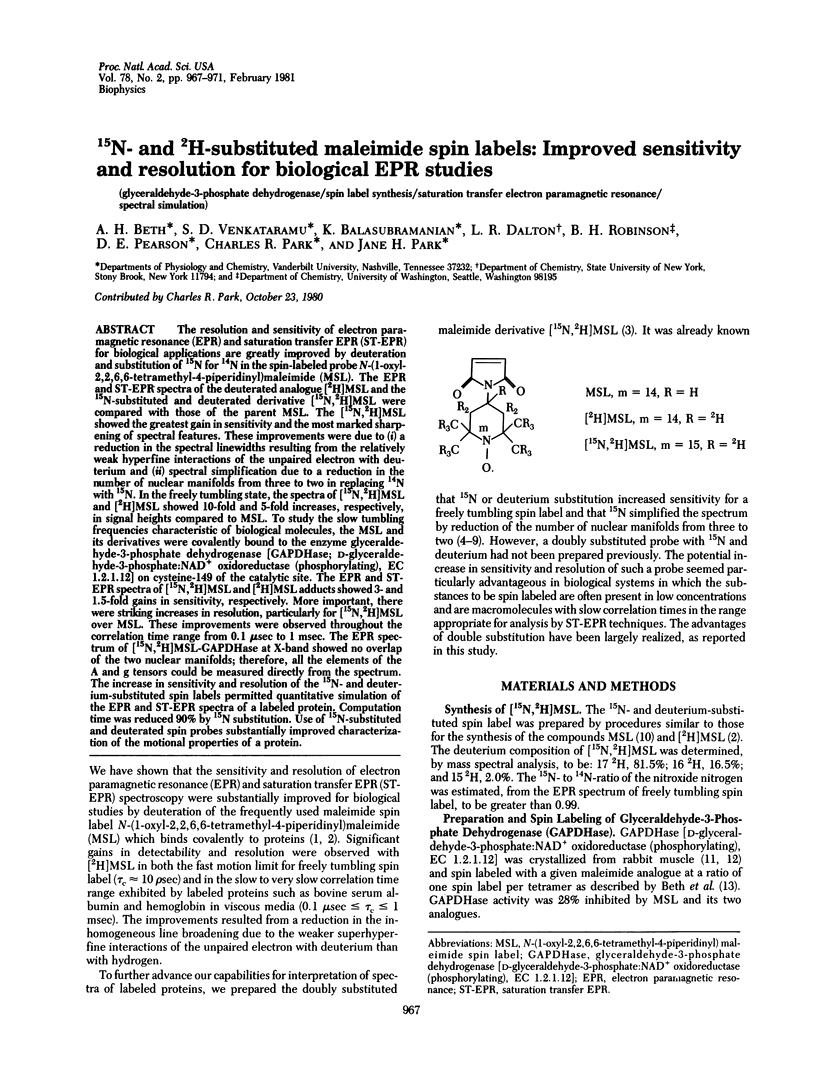
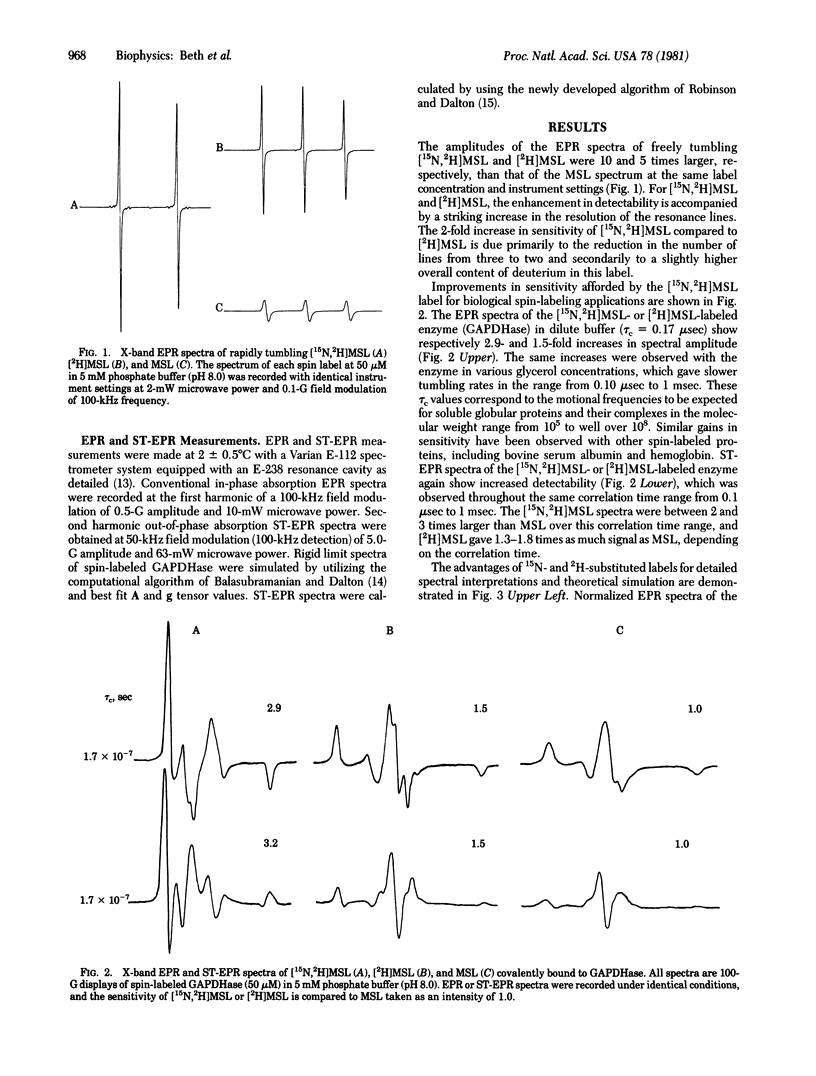
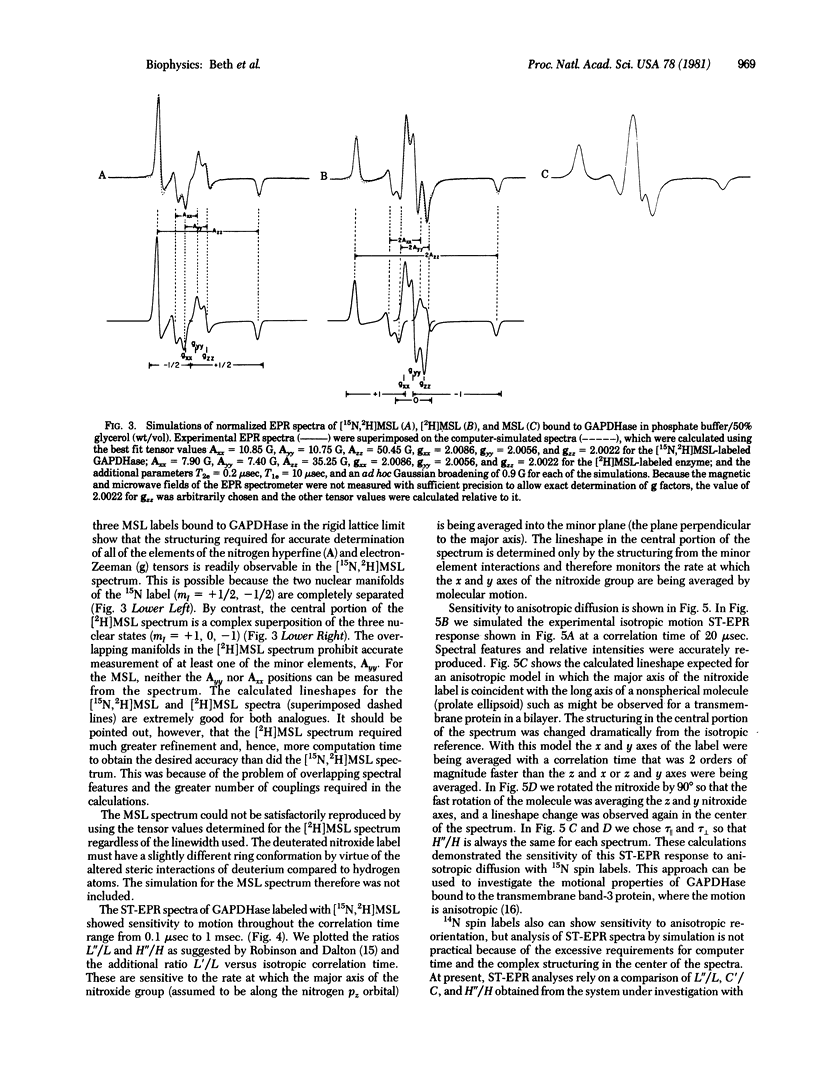
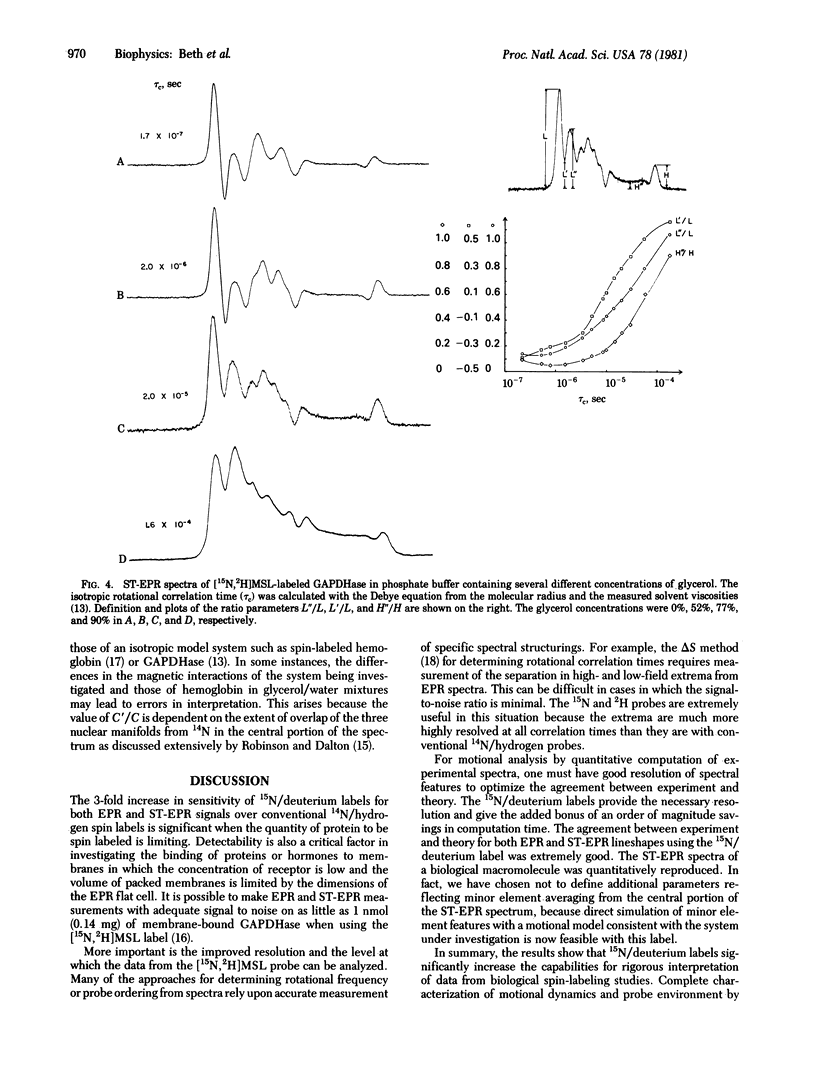
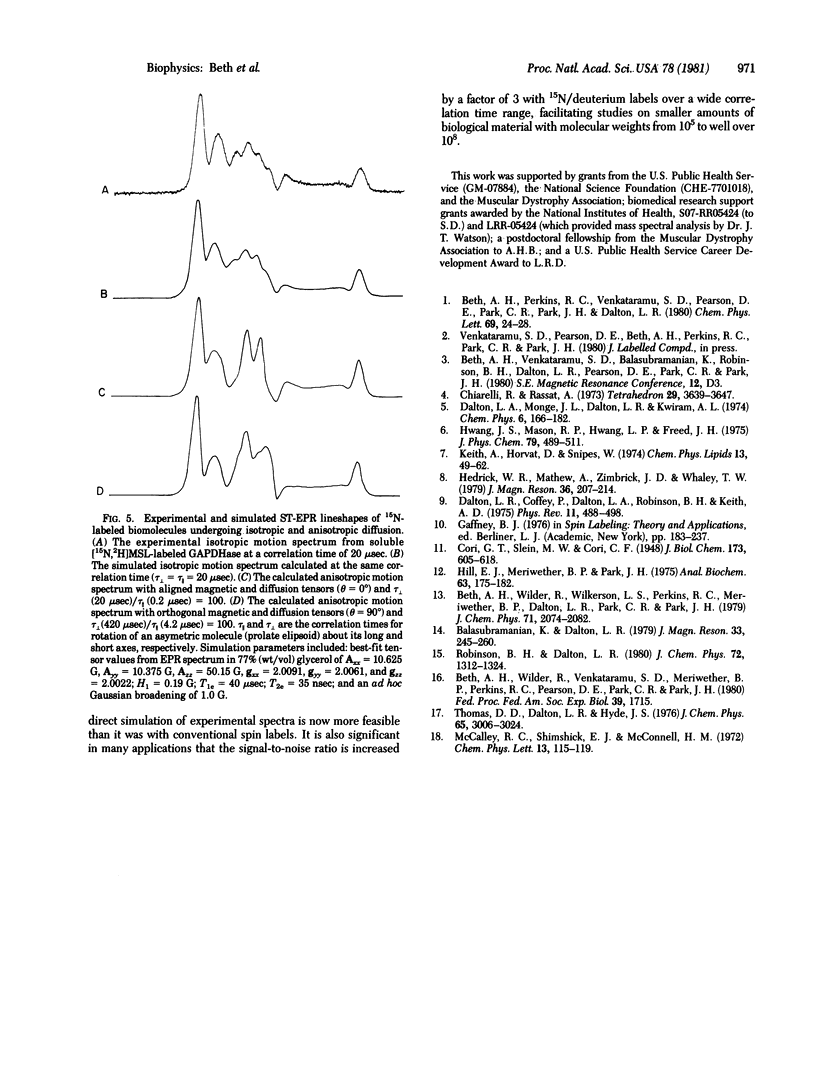
Selected References
These references are in PubMed. This may not be the complete list of references from this article.
- Hill E. J., Meriwether B. P., Park J. H. Purification of rabbit muscle glyceraldehyde 3-phosphate dehydrogenase by gel filtration chromatography. Anal Biochem. 1975 Jan;63(1):175–182. doi: 10.1016/0003-2697(75)90202-x. [DOI] [PubMed] [Google Scholar]
- Keith A., Horvat D., Snipes W. Spectral characterization of 15N spin labels. Chem Phys Lipids. 1974 Aug;13(1):49–62. doi: 10.1016/0009-3084(74)90041-3. [DOI] [PubMed] [Google Scholar]


